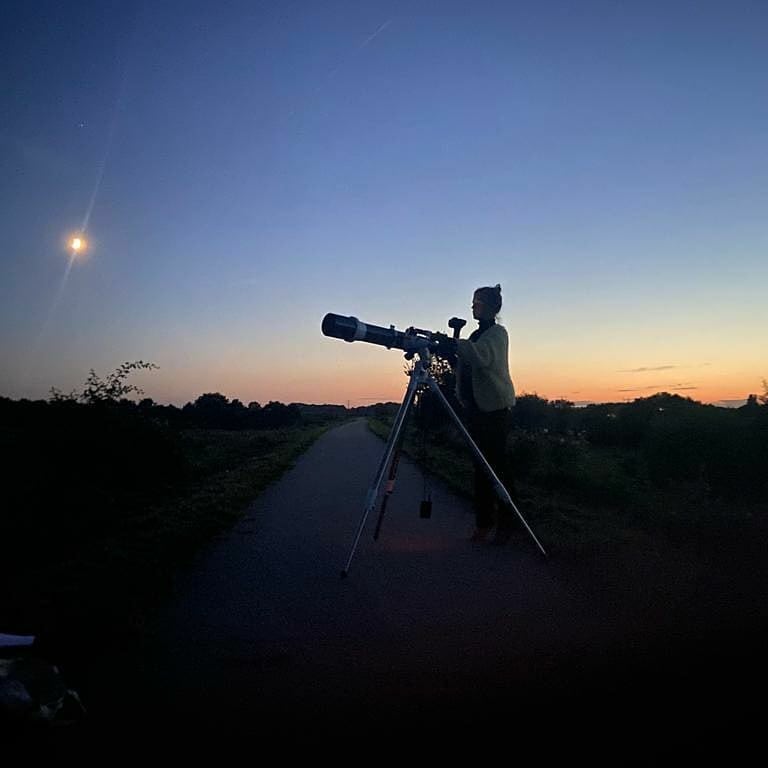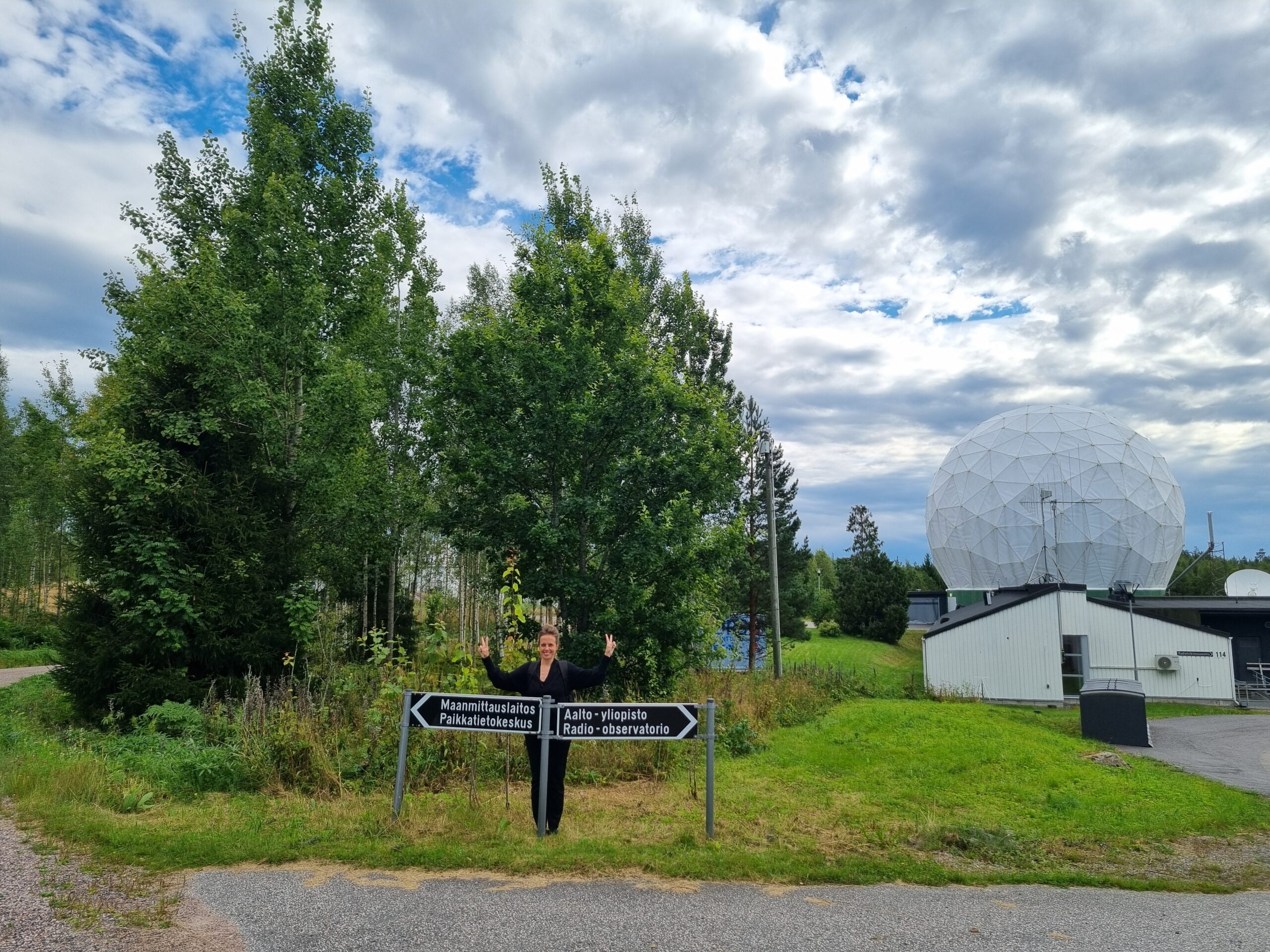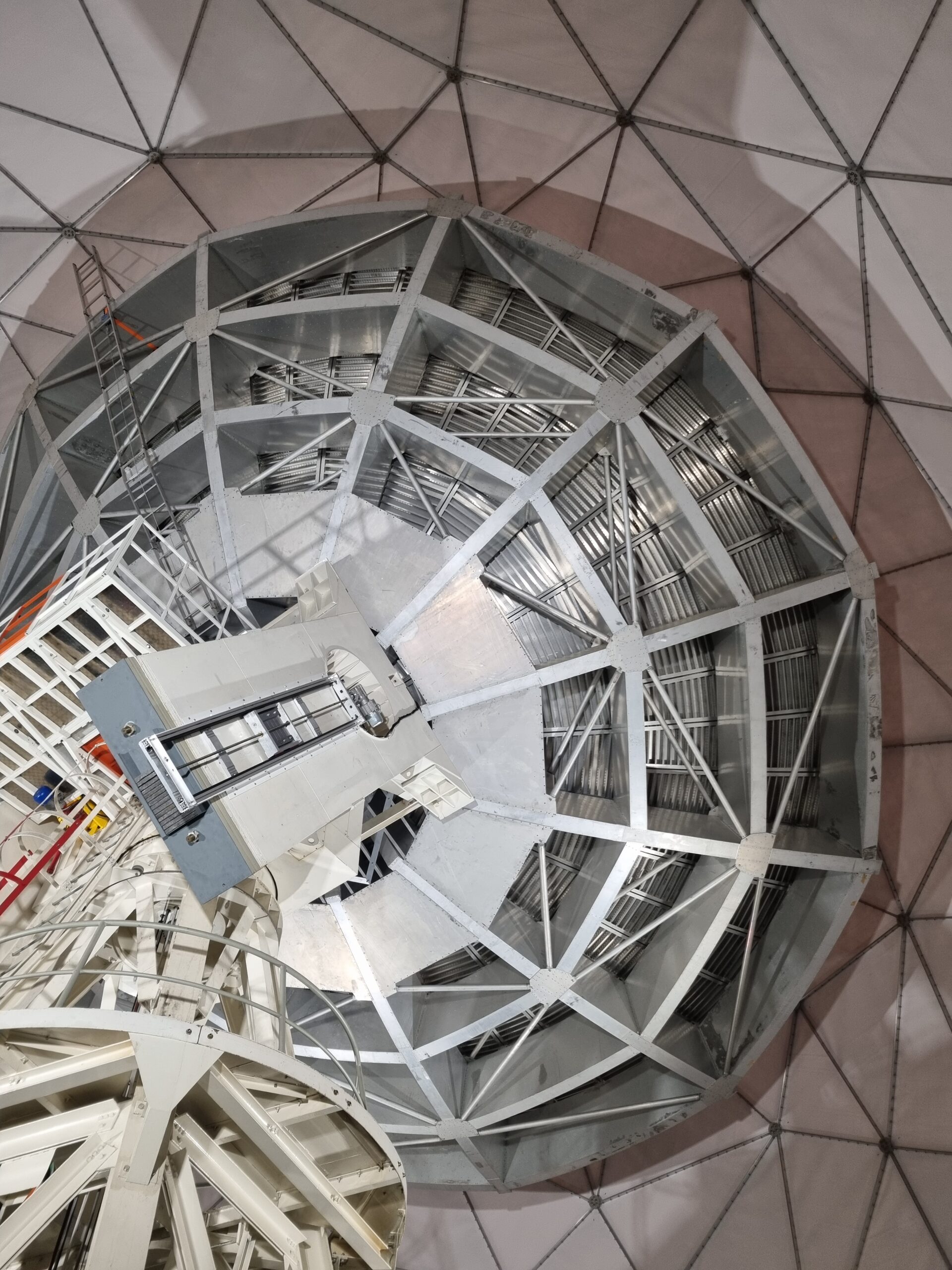
Since the autumn of 2024, alongside my PhD research, I’ve been writing a book with publishing house Ten Have. It’s a work about the imagination of space, about how looking outward also reveals a great deal about who we are as human beings.
I’m a strong advocate for philosophy that is directly connected to practice and in this case, to science. That’s why, for this project, I’m visiting (radio)telescopes, primarily in Europe, but also beyond, to engage in conversations about the science conducted there, the history of these locations, and the geopolitical perspectives intertwined with them. These observatories are places full of fascinating stories. They show how science is shaped by historical, social, and political contexts.
It is precisely this layeredness that makes these locations so compelling to write about. The book is expected to be published in 2027. In the meantime, I’m happy to give talks and presentations, or to share more about the project in person.
Introduction
During my first two academic studies, I focused on the role of imagination in the sciences:How do scientists use imagination to better understand the world?
It’s a big question, one that philosophy has explored extensively. Over the past two decades in particular, there’s been renewed interest in the role of imagination in science and technology. Think of the role imagination plays in innovation, or how science fiction influences scientific and technological breakthroughs.
In recent years, I’ve dedicated myself to exploring the role of imagination in the philosophy of space. In my PhD research, I engage in dialogue with scientists working in the space industry and investigate how they develop new knowledge. It’s well known that imagination, visualization, and thought experiments play an important role in science, particularly in innovative thinking. Yet we still know surprisingly little about the actual processes of imagination and how it contributes to the pursuit of scientific knowledge.
But a PhD project is something quite different from a romantic and poetic approach to the cosmos—a perspective I personally long for. That’s why I don’t want to approach the imagination of space purely through an analytical lens, but also seek to uncover the human stories and dreams behind the discoveries.
Perhaps I’m not saying anything new here, but science is deeply shaped by place and the people who bring it to life. The connection between science and place is essential. Space research is often influenced by local culture, regional history, and the specific challenges of the location itself. In many cases, scientific inquiry is shaped by the community in which it takes place, leading to unique perspectives and innovations. As philosopher Gaston Bachelard describes in his work on the poetics of space, our physical environments shape our thoughts and emotions. This idea strengthens the link between the science of space and the ways in which people relate to their surroundings.






What the universe is, is inextricably linked to Earth, our location, our perspective, and our way of experiencing. Which brings me to this question: What does it mean to look outward? And what does that tell us about ourselves?
For most of us, everyone except the small number of astronauts who have traveled beyond Earth-space remains an abstract concept. We don’t know what it feels like; we don’t know what it means to be there. And yet, we are all connected to it. Space is full of meaning and history.
Every discovery we make in the cosmos reflects back on ourselves, on Earth, and on our place in the larger whole. That’s why it’s important not only to consider the technical and scientific dimensions of space, but also the human stories that drive these discoveries.
The stories of scientists, communities, and cultures involved in space exploration are a rich source of meaning, fueling our curiosity and inspiring reflection. Guided by my romantic nature and a deep enthusiasm for exchanging ideas, for sharing thoughts and conversations that make eyes light up, minds spark, and aha-moments emerge, this project takes shape.
Over the years, I’ve formed friendships and exchanged ideas with space experts from around the world: aerospace engineers, physicists, space law specialists, interstellar thinkers, and artists. Together, we visit the places where space research takes place, and speak with the people who work and conduct research there. We ask: What is the history of this place? What impact does space research have on the people who live here? And how does this place, in turn, shape the research? What does it mean to look up at the stars from here?
In this collection, I describe my journeys to observatories and space research institutes,driven by a desire to better understand the meaning of place. I see these expeditions not only as scientific adventures, but also as opportunities to situate humanity and its history in a broader perspective.
Each location reveals stories that go beyond the technical marvels of space exploration,they offer glimpses into the human experience, our dreams, and the lessons we’ve learned.
What does space tell us about our place in the universe? How do our stories shape the way we explore the future?And what might these discoveries teach us about the essence of our existence?
This writing highlights the beauty of place and space the act of looking up at the stars while remaining, inevitably and necessarily, earthbound. By sharing these stories, I hope to create a space for reflection and dialogue, where science and philosophy meet.